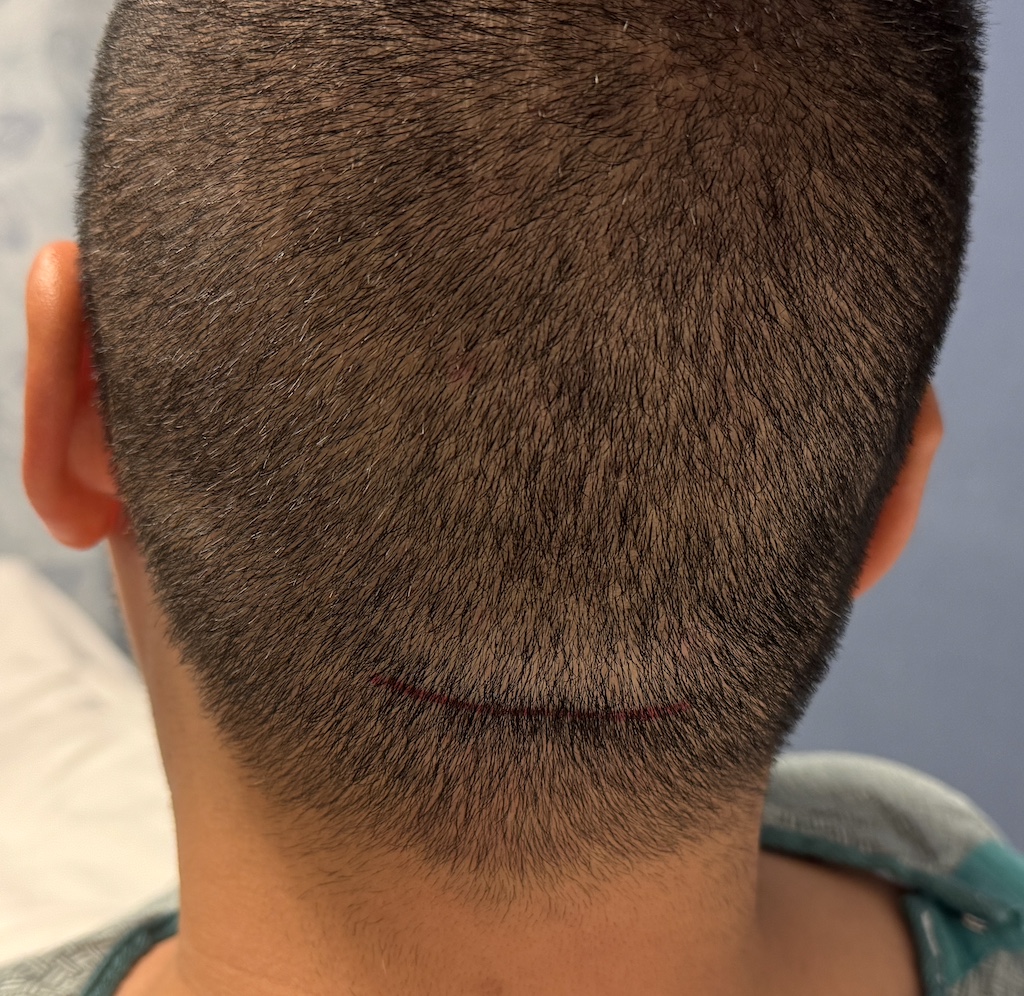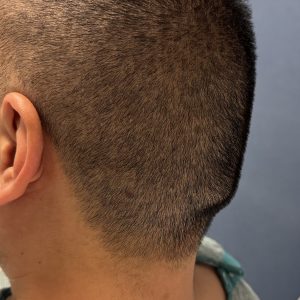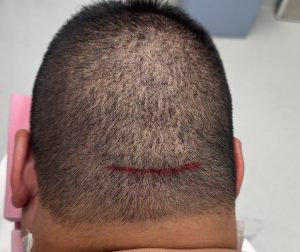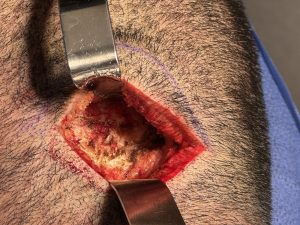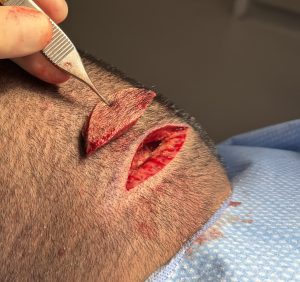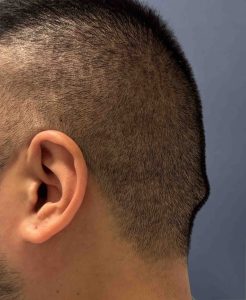Introduction
Occipital knob reduction—also known as inion reduction—is a form of skull reshaping surgery performed to smooth or reduce the bony prominence at the back of the head.
What It Is
The occipital knob is an outward projection of the occipital bone, located along the midline at the back of the skull. While most people have a small, inward-turned prominence that is not externally visible, some—particularly men—develop a more pronounced enlargement, known as an enlarged external occipital protuberance.
Although medically harmless, this prominence can make the back of the head appear overly convex or cause discomfort when lying down or wearing helmets.
Surgical Procedure
Occipital knob reduction is performed under general anesthesia with the patient in the prone (face-down) position. The key operative steps are as follows:
-
Incision: A small horizontal incision is made within the hair-bearing scalp, directly over the bony prominence.
-
Exposure: The bone is accessed through a narrow tunnel created by carefully dissecting down through the thick scalp tissue. This approach minimizes the incision length.
-
Bone Reduction: The excess bone is contoured and shaved down with surgical burrs until a smooth, natural skull contour is achieved.
-
Closure: The incision is closed in layers using resorbable sutures. When hair is present, it conceals the incision during healing. Even in shaved patients, the small incision is usually inconspicuous.
Recovery
-
Downtime: Most patients resume normal activities or work within several days.
-
Swelling/Soreness: Mild discomfort and swelling at the back of the head may last one to two weeks.
-
Scarring: The incision typically heals as a fine, well-concealed line.
-
Permanence: Because bone does not regrow, the results are long-lasting.
Ideal Candidates
Occipital knob reduction is best suited for individuals who:
-
Have a visible or palpable bump at the back of the head.
-
Find the prominence cosmetically distracting—especially men with short haircuts.
-
Experience discomfort or pressure in the area when resting or wearing helmets.
In most patients, this is a straightforward procedure. However, one variable that can affect the outcome is scalp thickness. The occipital knob lies where the skull meets the upper neck—a region where the scalp is naturally thickest. In some men, this can produce an overlying scalp roll. If this redundant soft tissue is not removed, reducing only the bony prominence may yield an incomplete correction.
Case Study
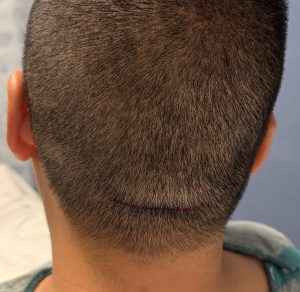
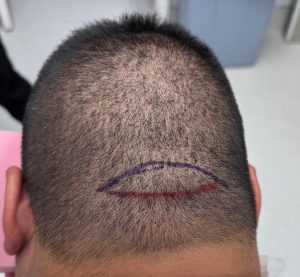
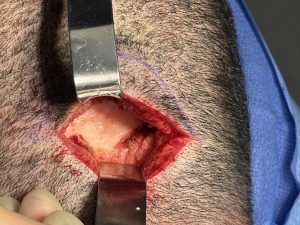
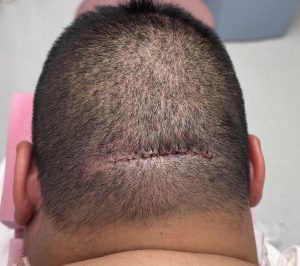
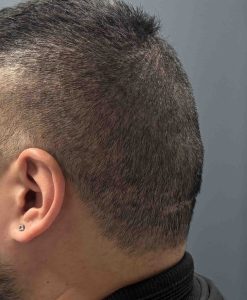
Discussion
The occipital region, located at the junction between the skull and the upper neck, is an area known for thick, redundant scalp tissue. Scalp rolls may appear as single, double, or even triple folds in this region. In such cases, the bony knob often appears smaller than expected, while the overlying soft tissue roll contributes more significantly to the visible contour abnormality.
For optimal correction, both components must be addressed. The redundant scalp tissue should be excised, even if doing so slightly lengthens the incision. Fortunately, the horizontally oriented elliptical excision lies along a natural scalp tension line, promoting favorable scar healing.
Key Points
-
In patients with thicker scalps, soft tissue redundancy can contribute significantly to occipital projection.
-
Excision of excess scalp tissue may be required in addition to bony reduction for the best aesthetic outcome.
-
Soft tissue removal may lengthen the scar compared to standard occipital knob reduction but typically heals well within natural scalp lines.
Barry Eppley, MD, DMD
World-Renowned Plastic Surgeon

